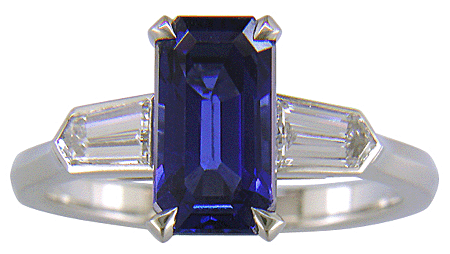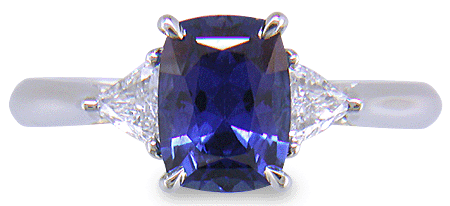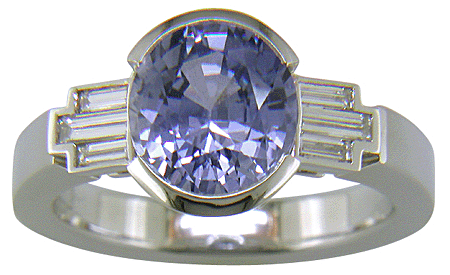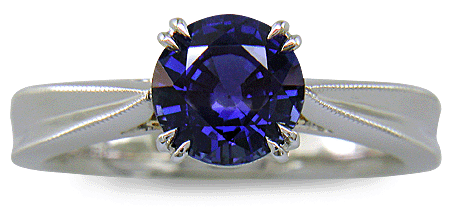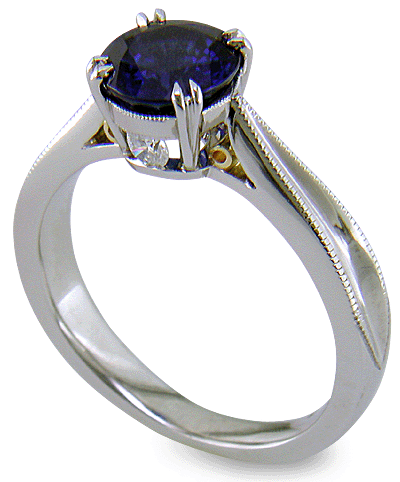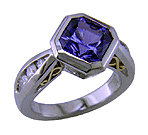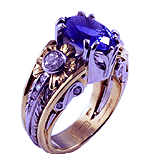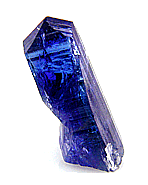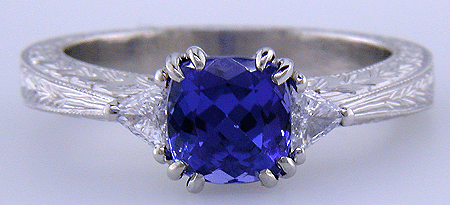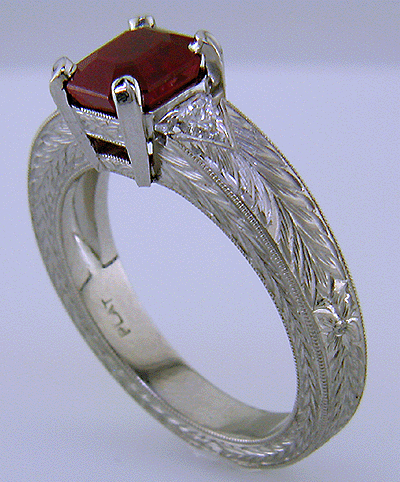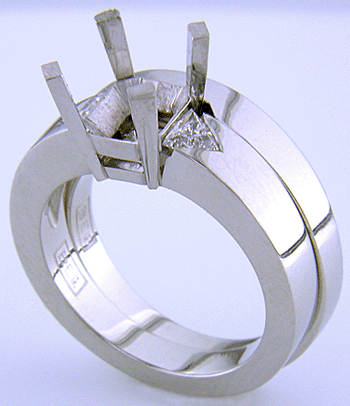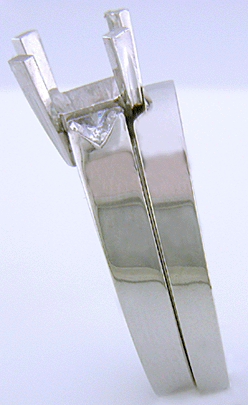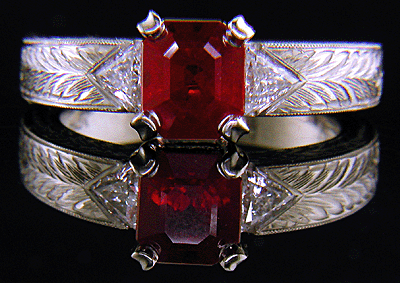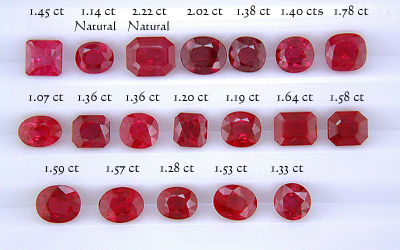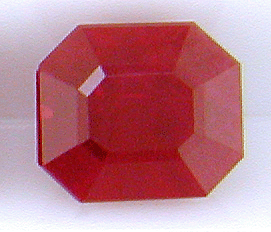Sapphires and Diamonds are classic gemstones that always go well together. Like the classic couples of the 1930s and 40s - remember Astaire and Rogers ... Bogart and Bacall - they are striking and always make a statement. Here are a few of my favorite Sapphire and Diamond rings.
The bold look and elegant lines of this beautiful emerald-cut Sapphire begged for an Art Deco design. To complement the Sapphire I selected two elongated obelisk-shape diamonds (bullet cuts) and bezel set them in platinum. The unusual cut of the diamonds is echoed in the tapered prongs securing the Sapphire and the raised center-line of the platinum band. The ring is an homage to Egyptian Revival and Art Deco eras, two of my favorite sources of design inspiration.
While Art Deco design emphasizes the beauty of geometric lines and dramatic angles, the above cushion-cut Sapphire suggests other possibilities. Accented with trilliant cut diamonds, the gently curved edges and softened corners of the rich blue Sapphire invite the viewer to get lost in a deep pool of cool crystalline water. The beautiful Sapphire is set in an example of our Sapphire Delight design.
This ring is named Sapphire Luminosity. It incorporates a clear, steely blue Sapphire that luminesces with a shimmering cool blue light. Accenting the oval Sapphire are six baguette diamonds dramatically set into the shoulders of the ring. In the gallery we call this staggered arrangement of the diamonds a "Rockefeller". The name is inspired by the soaring skyscrapers of Rockefeller Center, the Art Deco icon in New York City.
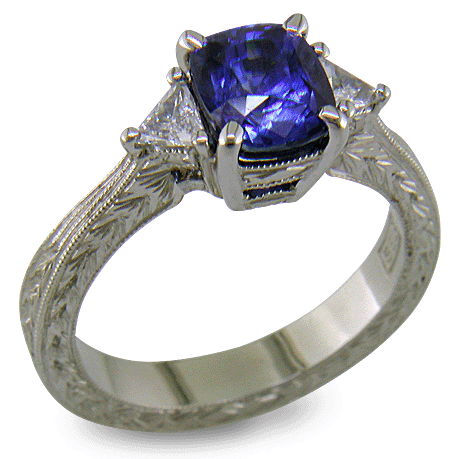
Hand engraving is a classic technique that beautifully complements Sapphires and diamonds. This hand-crafted platinum ring has a wonderful late Edwardian/early Art Deco feel that captures the elegance of a bygone era. Note the gentle millgraining that highlights the edges of the setting and band. When creating a ring there are many varieties of hand engraving from which to choose.
Not all Sapphire rings wear their diamonds on the side. This striking ring features a round Sapphire set in a variation of our Hidden Treasures design. The Sapphire is set with a prong style known as "French Double prongs". The up sweeping shoulders of the platinum ring are creased with a gentle valley and the edges accented with milgraining. As can be seen in the picture below, two diamonds are nestled between the upper and lower gallery of the setting, hence the name "Hidden Treasures".
On either side of the hidden diamonds, small circlets of yellow gold are set in the split shoulders of the upswept band. The golden accents offer a striking contrast to the cool white and blue of the diamonds, Sapphire and platinum. It is these little touches that really make a ring pop.
Our Breathless Rings are a contemporary take on a classic design ... our interpretation of a traditional three-stone ring set with beautiful gemstones and diamonds. This example showcases a soft cushion-shape royal blue Sapphire and round colorless diamonds. The platinum band is gently tapered as it approaches the gemstones. The style is a timeless classic that will surely be enjoyed for many generations. Often when creating a new ring, we like to start with the classics and add a little pizzazz !
These are just a few of my favorite Sapphire and diamond rings. Please visit our Sapphire Ring Gallery to see more of my designs.
If you have any questions about the above Sapphire rings or our other custom designs, please send me an email or give me a call (603 624-8672).


